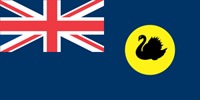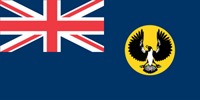Air Cargo Services
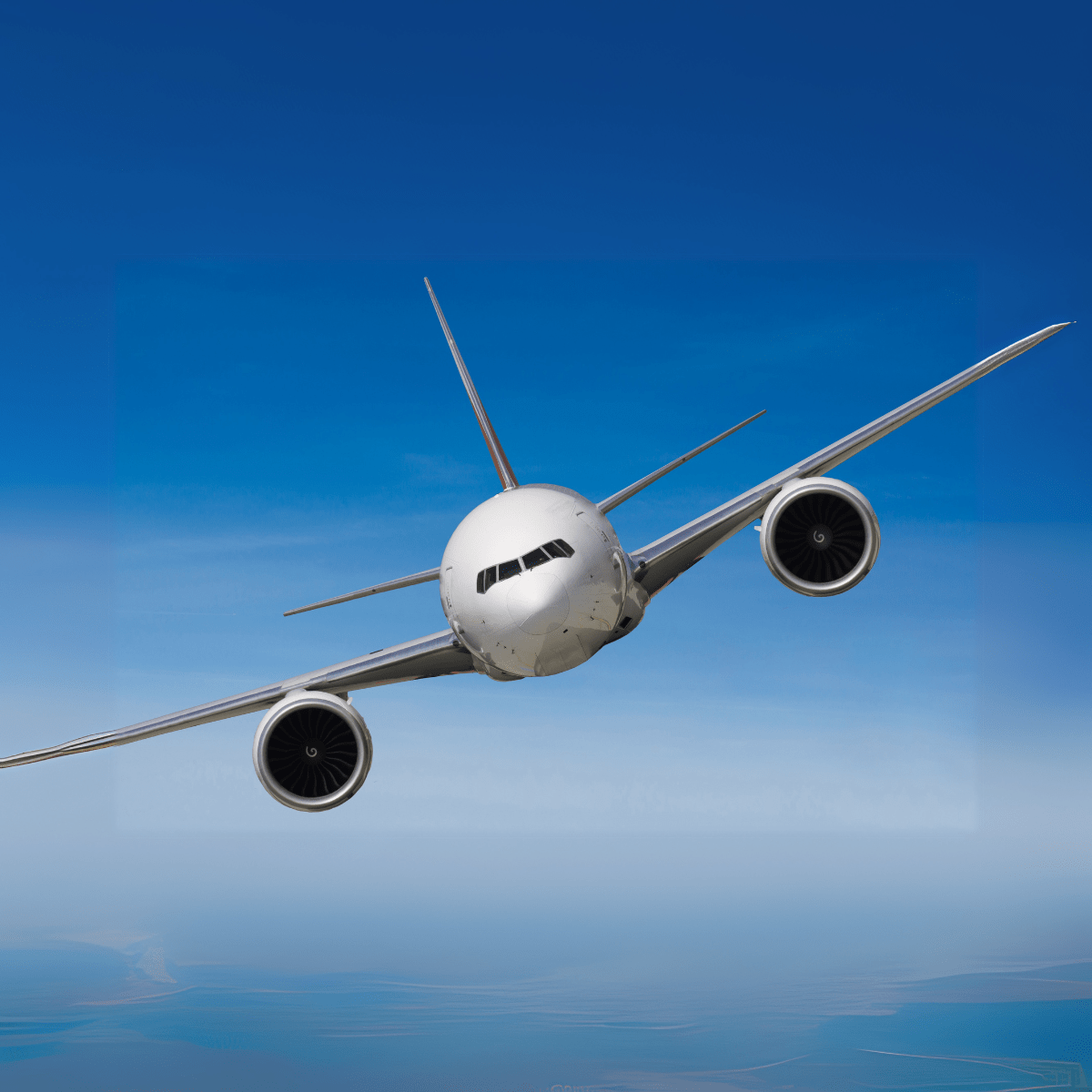 At CargoMaster, we specialize in delivering exceptional air cargo solutions that combine speed, security, and cost efficiency. Air cargo encompasses goods transported via aircraft, whether through air freight, air express, or airmail. We cater to a variety of shipping needs, utilizing passenger planes, dedicated cargo aircraft, and combi aircraft that accommodate both passengers and freight. By making full use of aircraft cargo capacity, including belly space, we ensure your goods are transported with maximum efficiency and minimal expense.
At CargoMaster, we specialize in delivering exceptional air cargo solutions that combine speed, security, and cost efficiency. Air cargo encompasses goods transported via aircraft, whether through air freight, air express, or airmail. We cater to a variety of shipping needs, utilizing passenger planes, dedicated cargo aircraft, and combi aircraft that accommodate both passengers and freight. By making full use of aircraft cargo capacity, including belly space, we ensure your goods are transported with maximum efficiency and minimal expense.
Passenger aircraft serve as a practical solution for smaller shipments, allowing cargo to be transported alongside passenger luggage. For time-sensitive packages, onboard couriers can carry items in the cabin, ensuring rapid delivery. On the other hand, dedicated cargo planes provide a robust solution for larger shipments, employing advanced loading systems such as nose-loading and side-loading to handle diverse freight. CargoMaster takes pride in customizing solutions to fit the specific needs of your shipment, helping you SAVE MONEY while maintaining prompt delivery schedules.
Combi aircraft, which transport cargo on a portion of the main deck alongside passengers, offer a unique hybrid option. These planes balance cargo and passenger loads, providing flexibility and cost-effectiveness for many clients. Regardless of the aircraft chosen, CargoMaster’s expertise guarantees secure and timely delivery of your air cargo. With strategic services and competitive rates, we ensure you Save Money and Save Time with every shipment.
Our team is available around the clock, offering seamless booking and real-time tracking for your convenience. Whether shipping domestically or internationally, CargoMaster’s commitment to quality service ensures your cargo reaches its destination securely, efficiently, and affordably.
Domestic & International Air Cargo Services
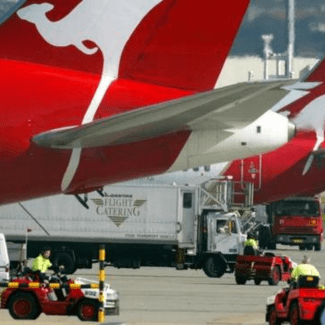 CargoMaster offers extensive domestic and international air freight services, designed to meet the demands of a globalized world. Domestically, our operations connect major cities and regional centers across Australia, ensuring reliable and speedy delivery for businesses and individuals. We provide both door-to-door and airport-to-airport services, tailored to fit your specific requirements. With 24/7 availability, our domestic air cargo solutions help you Save Time, regardless of the destination.
CargoMaster offers extensive domestic and international air freight services, designed to meet the demands of a globalized world. Domestically, our operations connect major cities and regional centers across Australia, ensuring reliable and speedy delivery for businesses and individuals. We provide both door-to-door and airport-to-airport services, tailored to fit your specific requirements. With 24/7 availability, our domestic air cargo solutions help you Save Time, regardless of the destination.
For international shipments, CargoMaster provides a global reach with connections to key markets such as the USA, UK, Europe, and Asia. Our international network operates through major Australian hubs, including Sydney, Melbourne, Brisbane, Perth, and Adelaide, ensuring efficient transit across borders. Whether shipping commercial goods, industrial equipment, or personal belongings, we handle your international shipments with care and precision.
To maximize flexibility and cost savings, we utilize a mix of freighters and commercial aircraft for international air cargo. This approach allows us to tailor solutions that suit your budget while maintaining the high standards of safety and speed for which CargoMaster is known. With weekly flights to and from global centers, our international services help you Save Money while delivering your goods quickly and securely.
By choosing CargoMaster, you’re selecting a partner with the expertise and resources to handle complex domestic and international logistics, ensuring seamless and cost-effective transportation every step of the way.
Urgent & Express Air Cargo
 When time is of the essence, CargoMaster’s urgent air cargo services provide an unmatched solution for critical shipments. Our same-day and overnight options are designed to meet the needs of businesses and individuals with tight deadlines. Available 24/7, our team works tirelessly to ensure your goods are transported swiftly and efficiently, helping you Save Time when it matters most.
When time is of the essence, CargoMaster’s urgent air cargo services provide an unmatched solution for critical shipments. Our same-day and overnight options are designed to meet the needs of businesses and individuals with tight deadlines. Available 24/7, our team works tirelessly to ensure your goods are transported swiftly and efficiently, helping you Save Time when it matters most.
We cater to industries with time-sensitive needs, such as medical, mining, and construction. From critical medical supplies to urgent machine parts, our network of aircraft and logistics experts ensures rapid and secure delivery. With years of experience, CargoMaster understands the importance of reliability and speed for urgent cargo, making us the go-to choice for express shipping.
For high-priority shipments, we also offer air cargo charter services. These customized charters provide exclusive flights for your goods, bypassing standard shipping routes and minimizing delays. This level of service is ideal for businesses managing tight timelines or handling sensitive cargo requiring special attention.
With CargoMaster’s urgent air cargo services, you can rest assured that your time-critical shipments will reach their destination without delay. Trust our team to keep your operations running smoothly and efficiently.
Specialized Air Cargo Solutions
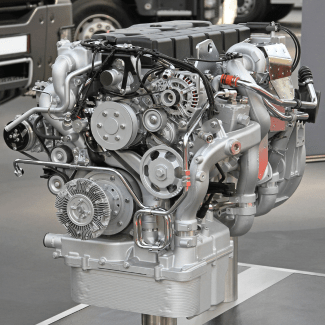 CargoMaster excels in handling specialized air cargo, including heavy, oversized, and perishable goods. For large shipments, such as construction equipment or industrial machinery, we provide access to aircraft equipped with advanced loading capabilities. Our heavy-lift services are tailored to meet the needs of large-scale projects, ensuring your cargo reaches even the most remote locations without hassle.
CargoMaster excels in handling specialized air cargo, including heavy, oversized, and perishable goods. For large shipments, such as construction equipment or industrial machinery, we provide access to aircraft equipped with advanced loading capabilities. Our heavy-lift services are tailored to meet the needs of large-scale projects, ensuring your cargo reaches even the most remote locations without hassle.
For temperature-sensitive shipments, our refrigerated air cargo solutions offer unparalleled quality and reliability. Whether transporting fresh produce, medical supplies, or other perishable items, CargoMaster’s state-of-the-art refrigeration systems and real-time monitoring guarantee your goods arrive in perfect condition. Our expertise in cold-chain logistics helps you Save Time by avoiding delays that could compromise your cargo’s quality.
CargoMaster also offers comprehensive packaging and handling services, ensuring your goods are securely prepared for transit. Whether dealing with oversized machinery or delicate perishables, our team ensures safe and efficient transportation tailored to your needs. By combining specialized services with cost-effective options, CargoMaster helps you Save Money while maintaining the highest standards of safety and professionalism.
From domestic deliveries to international shipments, CargoMaster is your trusted partner for air cargo solutions. Contact us today to learn more about our services and discover how we can make your shipping experience efficient, affordable, and stress-free.
Heavy & Oversized Air Cargo
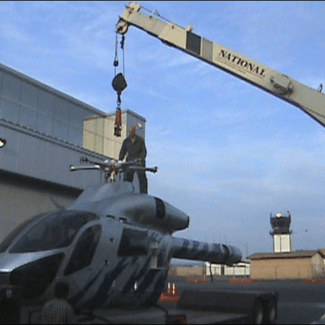 Transporting heavy and oversized cargo requires advanced logistics and specialized expertise. At CargoMaster, we excel in handling large-scale shipments, including industrial machinery, construction equipment, and other bulky goods. Our extensive fleet of cargo planes is equipped to manage these unique demands, employing advanced loading systems like nose-loading and side-loading for seamless handling. With CargoMaster, you can trust that your oversized cargo will be transported securely and efficiently to its destination.
Transporting heavy and oversized cargo requires advanced logistics and specialized expertise. At CargoMaster, we excel in handling large-scale shipments, including industrial machinery, construction equipment, and other bulky goods. Our extensive fleet of cargo planes is equipped to manage these unique demands, employing advanced loading systems like nose-loading and side-loading for seamless handling. With CargoMaster, you can trust that your oversized cargo will be transported securely and efficiently to its destination.
Our heavy-lift air freight services are ideal for industries such as mining, infrastructure, and manufacturing. Whether you’re shipping to remote areas in Australia or internationally, our network of specialized aircraft and ground handling teams ensures smooth transportation. We meticulously plan every aspect of the shipment, from packaging and loading to transit and delivery, minimizing risks and delays.
CargoMaster also offers customized solutions for oversized cargo. Our team works closely with clients to develop tailored transport plans that consider size, weight, and destination. This personalized approach ensures that even the most challenging shipments are handled with care and precision. With our competitive rates and efficient processes, you Save Money while benefiting from reliable and professional service.
By choosing CargoMaster for your heavy and oversized air cargo needs, you gain a trusted partner committed to delivering exceptional results. Our experience and resources make us the go-to choice for businesses requiring expert logistics for large-scale projects.
Perishable & Refrigerated Air Cargo
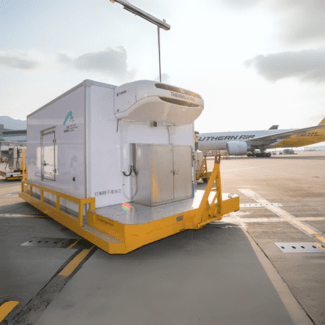 Perishable goods demand precise handling and rapid transportation to maintain their quality and safety. CargoMaster specializes in refrigerated air cargo solutions, ensuring temperature-sensitive items like fresh produce, pharmaceuticals, and other perishable materials are delivered in pristine condition. With state-of-the-art refrigeration systems and real-time monitoring, we provide the highest standards of cold-chain logistics for both domestic and international shipments.
Perishable goods demand precise handling and rapid transportation to maintain their quality and safety. CargoMaster specializes in refrigerated air cargo solutions, ensuring temperature-sensitive items like fresh produce, pharmaceuticals, and other perishable materials are delivered in pristine condition. With state-of-the-art refrigeration systems and real-time monitoring, we provide the highest standards of cold-chain logistics for both domestic and international shipments.
Our network includes aircraft equipped with advanced refrigeration technology, allowing for secure and efficient transport of perishable goods. From the moment your cargo is picked up to its final delivery, our systems maintain optimal temperatures, ensuring your items remain fresh and intact. CargoMaster’s cold storage facilities at major airports further enhance our capabilities, offering a seamless solution for temperature-controlled logistics.
CargoMaster understands the challenges businesses face when dealing with perishable goods, including tight deadlines and strict quality requirements. Our team works diligently to streamline the process, offering fast, reliable, and cost-effective solutions tailored to your specific needs. Whether shipping domestically or internationally, we help you Save Time by minimizing delays and ensuring prompt delivery.
By choosing CargoMaster’s refrigerated air cargo services, you not only Save Money but also gain peace of mind knowing your perishable goods are in expert hands. Our commitment to quality and reliability makes us a trusted partner for businesses across various industries.
Air Cargo Charter Services
 When standard air freight solutions don’t meet your requirements, CargoMaster’s air cargo charter services provide a dedicated, flexible option. Designed for urgent, high-value, or oversized shipments, our charters offer a direct and exclusive flight path to ensure your goods arrive on time. With access to a wide range of aircraft, we tailor each charter to suit your cargo’s unique needs, offering the ultimate in speed and reliability.
When standard air freight solutions don’t meet your requirements, CargoMaster’s air cargo charter services provide a dedicated, flexible option. Designed for urgent, high-value, or oversized shipments, our charters offer a direct and exclusive flight path to ensure your goods arrive on time. With access to a wide range of aircraft, we tailor each charter to suit your cargo’s unique needs, offering the ultimate in speed and reliability.
CargoMaster’s charter services cater to industries such as mining, medical, and emergency relief, where time and precision are critical. Whether you need to transport urgent medical supplies, sensitive machinery, or other critical cargo, our team is available around the clock to arrange a dedicated flight. By bypassing traditional routes, air charters eliminate delays and provide unparalleled efficiency, helping you Save Time when it matters most.
Our charters are also ideal for transporting heavy or oversized goods that may not fit on standard cargo planes. With advanced equipment and expert handling, we ensure your items are loaded, secured, and delivered safely. From start to finish, CargoMaster provides comprehensive support, including logistics planning, documentation, and real-time tracking, giving you complete confidence in the process.
By choosing CargoMaster for your air cargo charter needs, you benefit from a reliable, professional service that prioritizes your shipment’s safety and speed. Trust us to deliver exceptional results for your most demanding logistics challenges.
Cost-Effective Air Cargo Solutions
 At CargoMaster, we understand the importance of balancing cost with efficiency. Our cost-effective air cargo solutions are designed to provide businesses and individuals with affordable shipping options without compromising on quality. By leveraging our extensive network of freight forwarders and air cargo providers, we negotiate competitive rates to help you Save Money on every shipment.
At CargoMaster, we understand the importance of balancing cost with efficiency. Our cost-effective air cargo solutions are designed to provide businesses and individuals with affordable shipping options without compromising on quality. By leveraging our extensive network of freight forwarders and air cargo providers, we negotiate competitive rates to help you Save Money on every shipment.
Our flexible services include a variety of aircraft options, from passenger planes to dedicated cargo planes, allowing us to optimize costs while maintaining reliability. Whether you’re shipping standard freight, urgent packages, or oversized goods, we offer tailored solutions that fit your budget and requirements. With transparent pricing and no hidden fees, you can trust CargoMaster to deliver exceptional value.
In addition to competitive rates, we provide expert advice on preparing your cargo for transport. By optimizing packaging, consolidating shipments, and selecting the most efficient routes, we help reduce overall costs while ensuring your goods are transported securely. Our team is dedicated to finding cost-saving opportunities at every step of the process.
With CargoMaster’s cost-effective air cargo solutions, you don’t have to choose between affordability and quality. Our commitment to delivering reliable, efficient service makes us the preferred choice for businesses and individuals seeking value-driven logistics.
Preparing Your Air Cargo
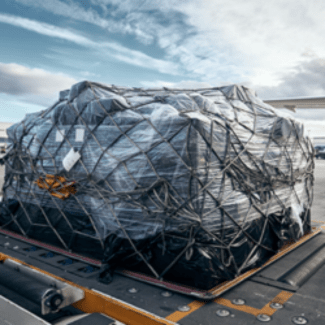 Proper preparation is the foundation of successful air cargo transportation. At CargoMaster, we offer expert guidance to ensure your shipments are packaged, labeled, and documented correctly, reducing the risk of delays or damage. Our team is available to assist with every step, from selecting the right packaging materials to navigating customs requirements, making the process seamless and stress-free.
Proper preparation is the foundation of successful air cargo transportation. At CargoMaster, we offer expert guidance to ensure your shipments are packaged, labeled, and documented correctly, reducing the risk of delays or damage. Our team is available to assist with every step, from selecting the right packaging materials to navigating customs requirements, making the process seamless and stress-free.
Packaging is a critical aspect of air cargo preparation. CargoMaster recommends using sturdy, appropriately sized boxes or pallets that can withstand the rigors of air transport. For fragile or high-value items, we offer specialized packaging solutions to provide additional protection. Ensuring your cargo is packed securely not only safeguards your goods but also streamlines handling during transit.
Labeling and documentation are equally important for a smooth shipping experience. Our team ensures that your cargo is correctly labeled with all necessary information, including destination, handling instructions, and any required regulatory markings. For international shipments, we assist with preparing customs documentation, ensuring compliance with regulations and preventing unnecessary delays.
By working with CargoMaster to prepare your air cargo, you Save Time and avoid common pitfalls that can disrupt the shipping process. Our expertise and attention to detail ensure your goods are ready for safe, efficient, and cost-effective transportation.
Frequently Asked Questions
How is Air Cargo Priced Per Kilogram?
Air freight pricing is influenced by several factors, including the destination, weight, and size of your shipment. The rate is determined based on either the actual weight or the volumetric weight (calculated by the dimensions of the cargo), with the higher of the two being used. For a precise and competitive quote tailored to your needs, contact CargoMaster at 1300 767 136. Our team will provide a customized estimate based on all aspects of your shipment, ensuring transparent and fair pricing.
What Types of Goods Can Be Transported Domestically?
CargoMaster facilitates the transportation of a diverse array of goods across Australia. Whether it’s heavy machinery, medical equipment, mining tools, industrial supplies like construction materials, or specialized signage, we ensure your cargo is handled with care. With a focus on timely and safe delivery, our services are designed to cater to your specific requirements, no matter where your goods need to go. For personalized solutions, reach out to CargoMaster for a tailored shipping plan and competitive pricing.
What Air Freight Services Does CargoMaster Provide?
CargoMaster delivers a comprehensive suite of air freight services to meet diverse needs. Our offerings range from international to specialized solutions for oversized or delicate cargo. Whether you’re relocating overseas, transporting fragile items, or handling industrial equipment, CargoMaster’s expertise ensures that every shipment is treated with the highest level of professionalism and care. With years of experience in the industry, we provide reliable and efficient solutions for all your air freight requirements.
Does CargoMaster Offer Door-to-Door Services Across Australia?
Absolutely! CargoMaster provides seamless door-to-door and airport-to-airport air freight services, available 24/7 across Australia. Whether you’re in a bustling city or a remote location, we make it simple and hassle-free to transport your goods. Our reliable logistics network ensures timely and efficient delivery, saving you time and effort. Get in touch with our team to explore our domestic air freight options and experience stress-free shipping.
What is Domestic Air Freight?
Domestic air freight refers to the transportation of goods by air within Australia, including to and from Tasmania. This service is ideal for businesses requiring fast and dependable delivery for time-sensitive shipments. CargoMaster’s domestic air freight solutions provide a cost-effective way to ensure your goods arrive promptly, helping you maintain smooth operations while meeting your deadlines.
What Are Freighter Aircraft?
Freighter aircraft are planes specifically designed to transport cargo without passengers. Common models like the Boeing 737, BAE 146, and the larger Boeing 767 are equipped to handle high-capacity freight loads. CargoMaster also offers access to versatile “Quick-change” jets that can alternate between passenger and cargo configurations, providing flexible options for a variety of air freight needs. These specialized aircraft ensure efficient and secure transport for your goods.
How Often Do Domestic Air Freight Flights Operate?
Domestic air freight flights operate frequently across Australia, ensuring fast and efficient transportation to cities and regional centers. CargoMaster utilizes this extensive network to provide timely delivery for your shipments, minimizing delays and keeping your business running smoothly. Our team ensures your cargo is scheduled on the next available flight, offering you peace of mind and quick turnaround times.
Can CargoMaster Handle Remote Area Deliveries?
Yes, CargoMaster specializes in air freight services for Australia’s most remote and hard-to-reach locations. Whether you’re shipping to a rural town, mining site, or isolated community, we have the infrastructure and expertise to coordinate efficient pickups and deliveries. With our extensive network and commitment to reliability, we make transporting goods to or from remote areas straightforward. Contact us at 1300 767 136 to learn more about our remote delivery services.
Addition Information
(Click the +/- plus/minus symbols to expand/collapse)
IATA CODES FOR MAJOR AUSTRALIAN AIRPORTS
| Airport | IATA code | ICAO code |
| Adelaide | ADL | YPAD |
| Alice Springs | ASP | YBAS |
| Brisbane | BNE | YBBN |
| Cairns | CNS | YBCS |
| Canberra | CBR | YSCB |
| Darwin | DRW | YPDN |
| Gold Coast | OOL | YBCG |
| Hobart | HBA | YMHB |
| Launceston | LST | YMLT |
| Melbourne (Avalon) | AVV | YMAV |
| Melbourne (Tullamarine) | MEL | YMML |
| Perth | PER | YPPH |
| Sunshine Coast | MCY | YBSU |
| Sydney | SYD | YSSY |
| Townsville | TSV | YBTL |
INTERNATIONAL AIRPORTS
|
|
GLOSSARY OF AIR FREIGHT TERMS AND ABBREVIATIONS
| A2A | Airport-to-airport |
| A2D | Airport-to-door |
| ADV | Advise, Advised, Advising |
| AEA | Association of European Airlines (see the page “Interest Organisations” of this website also) |
| Airline | Company operating aircraft between steady origin and destination airports |
| Airmail | Mail travelling by air |
| Air Operator | Company operating aircraft |
| Airport-to-airport | Transport from an airport of origin to an airport of destination |
| Allotment | Assigned volume on board of a flight / day |
| AOG | Aircraft On Ground ; materials expedited for repair of a grounded aircraft |
| AP | Airport |
| ARR | Arrive, Arrived, Arrival |
| ARR | Also a C2K milestone: ARR = cargo and documents arrived at airport of destination |
| ATA | Air Transport Association (see the page “Interest Organisations” of this website also) |
| ATA | Actual Time of Arrival |
| ATD | Actual Time of Departure |
| Authorisation | The commission to a certain person or body to act on behalf of another person or body ; the person or body can be authorised e.g. to issue air waybills or to collect freight |
| AVI | Live Animal(s) |
| AWB | Air Waybill |
| Backlog | Amount of goods still to be delivered or received and for which the planned or agreed date has expired |
| BAG | Baggage |
| Belly | Lower-deck cargo hold of an aircraft |
| BIG | Outsized cargo |
| Blocked-space agreement | A continuous reservation (allotment) for space at one or more flight / date combinations with an airline |
| Bonded Goods | Goods on which the customs duty has not yet been paid, and which therefore, are under the control of customs; usually in a Bonded warehouse. |
| Bonded warehouse | A depository for goods on which the customs duty has not been paid ; the warehouse proprietor must provide a bond (often in the form of a bank warranty or a mortgage) to the customs authorities as a security for any duties which may not be paid by the customer |
| Booking | Request for reservation of space on a flight/day, (to be) confirmed by the airline |
| Break Bulk Agent | A forwarder breaking the bulk: taking care of the unpacking and sorting of goods after the flight |
| Breakdown List | List of shipments carried in one consolidation (see also: Consolidation Manifest) |
| Broker | Person who acts as an agent or intermediary in negotiating contracts ; sometimes refers to a forwarder role |
| Bulk Cargo | Loose cargo not loaded on an ULD |
| C2K | Cargo 2000 (see the “Cargo 2000” page of this website) |
| Cargo Aircraft | Aircraft built with the purpose of carrying nothing else than cargo |
| Cargo assembly | The separate reception of parcels or packages and the holding of them for later dispatch as one consignment ; consolidator role |
| Cargo Disassembly | The separation of one or more of the parcels or packages that are part of a consignment for further distribution ; break bulk role |
| Carriage | Transport ; the process of conveying cargo from one point to another |
| Carrier | The party responsible for transport of goods from one point to another, this can be for example an airline or a forwarder (as a NVOCC) |
| CASS | Cargo Accounts Settlement System |
| CAO | Cargo Aircraft Only |
| CC | Charges Collect ; pay at moment of collection of the goods |
| CCS | Cargo Community System ; information system integrating the communication between air cargo parties at an airport |
| Certificate of Origin | A certificate proving the country of original production of goods ; used for customs declaration purposes |
| Charges collect | Charges as stated on the air waybill to be collected from the consignee |
| Charges prepaid | Charges as stated on the air waybill to be collected from the shipper |
| Claim | A written complaint about the execution of a contract of transportation by a carrier, combined with a demand for financial compensation |
| Classifying | Assigning the right import classification number to goods as part of the customs declaration process |
| CLR | Clear |
| CNEE | Consignee |
| COLL | Collect, Collected, Collecting |
| COMAT | Company Material (non revenue cargo) |
| Combi | Combi Aircraft, combining transport of passengers and cargo on the main-deck |
| Commodity | Indication of the type of goods ; commodities are coded according to the harmonised system |
| Commodity code | Code used in the Harmonised System for the classification of goods, which are most commonly produced and traded |
| Complaint | An official statement from a customer to a carrier about his unhappiness with the service or operation of the service provider |
| Consignee | The person or company that is physically and administratively responsible for accepting the goods at final delivery |
| Consolidation | A collection of shipments belonging to different shippers travelling to one destination or area to be distributed to several consignees |
| Consolidation Manifest | List of shipments carried in one consolidation |
| Consolidation Rates | Rates as given by a consolidator / forwarder |
| Consolidator | A forwarder consolidating shipments before a flight ; these shipments belonging to different shippers and travelling to one destination or area in order to be distributed to several consignees after the flight |
| Courier | Company that carries envelopes and parcels up to 75 kg from door to door ; air transport is generally outsourced to airlines |
| Courier Rates | Rates as given by a courier |
| CPTY | Capacity |
| CRN | Customs Release Note |
| Customs Agent/Broker (Certified) | Party certified to handle the customs clearance on account of importers / exporters |
| Customs invoice | (Pro forma) Invoice for import declaration (customs and statistics) purposes, stating the commercial price, added with the costs for freight, insurance and packing etc., terms of delivery and payment |
| Customs value | Value of goods to be imported for import declaration (customs and statistics) purposes |
| D2A | Door-to-airport |
| D2D | Door-to-door |
| Dangerous Goods | Goods that can be hazardous for health, flight-safety or materials |
| DAP | A C2K key performance indicator: DAP = Delivered As Promised (NFD in full and on time statuses are achieved) |
| DEP | A C2K milestone: DEP = cargo and documents departed at airport of origin |
| DEPT | Department |
| DG | Dangerous Goods |
| DGR | Dangerous Goods Regulations (IATA) |
| Dimensional Weight (Conversion) | Concept adopted by the transportation industry worldwide as a uniform means of establishing a minimum charge for the cubic space a package occupies ; the volume is converted into a (higher) weight / price class |
| DIMS | Dimensions |
| DIP | Diplomatic mail |
| DLV | Deliver, Delivered, Delivering |
| DLV | Also a C2K milestone: DLV = cargo and documents delivered to customer (forwarder) |
| DOCS | Document(s), Documentation |
| Domestic transport | Transport within a country |
| Door-to-door | Transport from an initial shipper’s house address to a final consignee’s house address |
| Duty | Tax imposed on goods imported from another country |
| EDI | Electronic Data Interchange |
| EDIFACT | Electronic Data Interchange For Administration, Commerce and Transport ; a specific EDI protocol |
| e-Freight | Electronic freight documents project from IATA ; e-Freight aims to take the paper out of the air cargo supply chain and -processes and replace it with cheaper, more accurate and more reliable electronic messaging ; facilitated by IATA, the project is an industry-wide initiative involving carriers, freight forwarders, ground handlers, shippers and customs authorities |
| Electronic Data Interchange | The interchange of electronic data, structured following an agreed protocol, between the automated information system of different parties |
| Embargo | An embargo on a certain kind of goods means these goods will not be transported by the airline, often for flight-safety reasons |
| Equipment | Materials needed to handle or transport goods |
| ESC | European Shippers’ Council (see the page “Interest Organisations” of this website also) |
| ETA | Estimated Time of Arrival |
| ETD | Estimated Time of Departure |
| Expediting | Forwarding goods (in less than the normal lead time) |
| Expeditor | Forwarder |
| FAK | Freight All Kinds |
| FAK-Rates | Rates for Freight All Kinds |
| FAP | A C2K key performance indicator: FAP = Flown As Planned (the complete shipment has flown at or before the last planned flight with a maximum 12 hour delay) |
| FCL | Full Container Load |
| FDCA | Found Cargo |
| FFM | Freight Forwarding Message (electronic) |
| FIATA | International Federation of Freight Forwarders Associations (see the page “Interest Organisations” of this website also) |
| FLT | Flight |
| Forwarder | Company specialized in providing door-to-airport transport, arranging connecting air transport and/or airport-to-door transport for parcels and consolidations > 75 kg or up to anything that fits in an aircraft ; the air transport is generally outsourced to airlines and sometimes aircraft operators or air charter companies |
| Forwarder network | A network existing of different smaller to medium sized forwarding companies all over the world working together |
| Freighter | Aircraft built with the purpose of carrying nothing else than cargo |
| FSU | Freight Status Update |
| Fuel Surcharge | Surcharge added to the cargo rate to cover the additional costs of increasing fuel-prices ; these will generally follow a certain index |
| Full charter | Chartering the full available volume of an aircraft or flight/day |
| Full Container Load | Container fully loaded, generally with goods belonging to one party |
| Full freighter | Aircraft built with the purpose of carrying nothing else than cargo |
| FWB | Electronic air waybill message |
| FWB | Also a C2K milestone: FWB = the shipment is booked at the airline, next an electronic air waybill is generated by agent (forwarder) ; this creates the so-called route map in C2K in which all the steps are followed |
| FYI | For Your Information |
| General Cargo Rates | Rates for all different kinds of cargo, not falling into a specific handling and/or rate category |
| GSA | General Sales Agent |
| GSF | Global Shippers Forum (see the page “Interest Organisations” of this website also) |
| Handling Agent | Agent handling the ramp and/or warehouse cargo operation for an airline |
| Harmonised System | A numeric multi purpose system for the classification of goods with its six digits covering about 5000 descriptions of the products or groups of products most commonly produced and traded, designed for customs purposes, but can also be used for statistics, transport purposes, export, import and manufacturing; the international convention on the HS was established under auspices of the World Customs Organisation in 1983 |
| Haulage | Inland transport of cargo |
| Haulier | Road carrier |
| HEA | Heavy Cargo |
| HAWB | House Air Waybill |
| House Air Waybill | The shipment contract between the end-customer and the forwarder (see the page “Forwarding Out” of this website for further purposes and explanation) |
| Hub | Central point in a transport system or network |
| HUM | Human remains |
| HWB | House Waybill |
| IATA | International Air Transport Association (see the page “Interest Organisations” of this website also) |
| IATA-Agent | An IATA certified agent |
| ICAL | Inbound Cargo Action List |
| ICAO | International Civil Aviation Organisation (see the page “Interest Organisations” of this website also) |
| ICE | Dry Ice Shipment |
| IN | Inches |
| Inco terms | Internationally agreed set of standard delivery terms |
| Integrator | Carrier integrating different modes of transport to form a door-to-door transport or supply chain ; this term mostly refers to the large international express companies who’s core business is to carry envelopes and parcels up to 75 kg, often overnight or even same day |
| Intermodal Transport | The movement of cargo in a supply chain by more than one mode of transport ; for example road/air or sea/air transport |
| INV | Invoice |
| ISA | If Space Available |
| KG | Kilos |
| L/C | Letter of Credit |
| LCL | Less than Container Load |
| Less than Container Load | Container partly filled with goods from one party, or an amount of goods that is not sufficient to fill one container and will therefore likely be consolidated |
| LHO | Living Human Organs / Blood |
| License, import/export | Governmental permit to import / export certain goods under certain conditions |
| Line item | Order line, each line on a packing list or invoice to be declared for customs |
| Load factor | The extent to which the aircraft (weight-, volume-, ULD-) capacity is efficiently utilized (to generate profit) |
| LOC | Location |
| Loose cargo/shipments | Cargo / shipments not loaded on an ULD |
| Lower Deck | The (cargo) deck below the main deck or upper deck of an aircraft |
| LT | Local Time |
| Main deck | Upper deck ; the (cargo) deck above the lower deck of an aircraft |
| Manifest, flight | Document listing the air waybills and a specification of the related goods carried on a flight |
| Master Air Waybill | The shipment contract between the forwarder and the airline (see the page “Forwarding Out” of this website for further purposes and explanation) |
| MAWB | Master Air Waybill |
| MFST | Manifest |
| Minimum Rate | Rate to cover the basic costs of carrying a shipment |
| MSG | Message(s) |
| Network Forwarder | A large forwarding company with worldwide branches |
| NFD | A C2K milestone: NFD = cargo and documents ready for pick-up at airline (handler), the customer (forwarder) is notified |
| NND | Notice of Non Delivery |
| NON-IATA | Airline or agent that is not a member of IATA |
| Nose loading | Loading cargo through the cargo door in the nose of an aircraft |
| Notify address | Address of a party other than the consignee to be notified of arrival of the goods |
| Notify party | Party other than the consignee to be notified of arrival of the goods |
| NOTOC | Notification To Captain ; list for the captain of the aircraft with goods carried on board |
| N-Rates | Rates for shipments with weights up to 45 kg |
| NVOCC | Non Vessel Operating/Owning Cargo Carrier ; in case of Air Cargo a Carrier (e.g. a Forwarder or Consolidator) who issues Air Waybills for the carriage of cargo on aircraft which he does not operate or own |
| OAG | Official Airlines Guide |
| OB | On Board |
| Oversized Cargo | Cargo that exceeds the dimensions of an ULD |
| Package | Packed piece of cargo |
| Packing list | A list for customs declaration and consignment purposes stating number and kinds of packages being shipped, totals of gross, legal, and net weights of the packages, marks and numbers on the packages, contents and part-/serialnumbers |
| Pallet | A (standardized) platform on which goods can be stacked for transport or warehouse handling purposes |
| Pallet, aircraft | A (standardized) platform on which goods can be stacked for air transport purposes |
| Pallet net | A net used to secure the cargo on the aircraft pallet |
| Parcel | Package |
| Part charter | Chartering of a part of the available volume on an aircraft or flight/day |
| Part shipment | Part of a shipment that travels on a different flight and/or day than the rest of the shipment due to available capacity with the airline |
| PAX | Passenger(s) |
| Payload | The (cargo) load that can be carried by an aircraft (to generate revenue) |
| PC | Piece(s) |
| PER | Perishable Cargo |
| PFI | Pro Forma Invoice |
| POA | Proof Of Acceptance ; legal proof a shipment has been accepted by a party |
| POD | Proof Of Delivery ; legal proof a shipment has been delivered by a party |
| POD | Place Of Delivery |
| PP | Charges Prepaid |
| PPD | Prepaid |
| Pre-alert | Message stating the current and or expected status of the goods |
| Principal | The customer ordering the transport or related services |
| PSH | Part Shipment |
| QNTY | Quantity |
| Q-Rates | Rates with a quantity discount |
| RCF | A C2K milestone: RCF = cargo has arrived in the cargo bay at final destination ; cargo and airwaybill are administratively received in the system |
| RCPT | Receipt, Reception |
| RCS | A C2K milestone: RCS = cargo and documents are received ‘Ready For Carriage’ and accepted by airline (handler) |
| Ready For Carriage | (By Air) The goods are correctly packed and labeled, and customs cleared, with the right documents attached |
| Ready For Transport | (By Road) The goods are correctly packed and labeled, with the right documents attached |
| RFC | Ready For Carriage |
| RFT | Ready For Transport |
| Routing | The path that is (to be) followed by the goods from shipper to consignee |
| RUSHR | Rush Reply |
| SASPO | As Soon As Possible |
| SAWB | Substitute Air Waybill |
| Security Surcharge | Surcharge added to the cargo rate to cover the additional costs of the increasing number of security checks and related administration that are legally required by the authorities |
| Shipper | The person or company that is physically and administratively responsible for shipping the goods ; for an airline in most cases a forwarder will be the shipper, for a forwarder the shipper is a third party, for example a trading company, a manufacturer, etc. |
| Shipper’s Letter of Instruction | Document issued by the shipper to instruct and authorize the forwarder to forward and declare goods on his behalf ; contains all shipment details needed to facilitate these services |
| SHPMNT | Shipment |
| Side loading | Loading cargo through a cargo door in the side of an aircraft |
| Skid | Pallet |
| S/L | Short Loaded |
| SLI | Shipper’s Letter of Instruction |
| SSPD | Short Shipped ; stayed behind |
| TACT | The Air Cargo Tariff ; publication of official airline tariffs |
| TBA | Time Before Arrival |
| TBD | Time Before Departure |
| TEMP | Temperature |
| TIACA | The International Air Cargo Association (see the page “Interest Organisations” of this website also) |
| TILNA | Tilting Not Allowed |
| TILTA | Tilting Allowed |
| Time Slot | The agreed time to collect or deliver goods |
| Tonne Kilometer | One tonne (1000 kg or 2204.6 lb) metric flown one kilometer ; productivity indicator |
| TRA | Transit |
| Tracing | Retrieving (information on) the status of goods and documents |
| Tracking | Regular checking on the status of goods and documents |
| Track & Trace | Automated regular retrieval of (information on) the status of goods and documents and checking these against the agreed norms |
| Transfer cargo | Transfer of cargo from one flight to another |
| Transito / Transit cargo | Transfer of cargo from one flight to another |
| TRM | Transfer Manifest |
| TTL | Total |
| ULD | Unit Load Device |
| ULD, contoured | Unit Load Device shaped to exactly fit in an aircraft |
| UNACC | Unaccompanied |
| Unit Load Device | Standardized air cargo loading equipment (pallet, container) |
| Upper deck | Main deck ; the (cargo) deck above the lower deck of an aircraft |
| VAL | Valuable cargo |
| VAT | Value Added Tax |
| VOL | Volume |
| Volume charge | Air transport charge based on the volume of goods instead of the actual weight (see “Dimensional Weight” and “Weight charge” also) |
| VUN | Vulnerable cargo |
| Weight charge | Air transport charge based on the actual weight of the goods (see “Dimensional Weight” and “Volume charge” also) |
| Weight & Balance | Management of the weight and allocation of cargo, passengers and fuel for a flight |
| W/H | Warehouse |
| XPS | Priority Small Package |
| XS | In Excess |
| Yield management | The process of maximising the contribution (revenue) of the (transport & handling) network, equipment, infrastructure and resources |
UNIT LOAD DEVICES (ULD)
Types of Unit Load Devices Used in Australia
AKE Container
- Type: AKE CONTAINERATA Code: LD3
- Internal Volume: 152 cu. ft. 4.3 mc
- Weight Limit: 1,588 kg
- Loadable Aircraft Type: 747, 747F, 777, Airbus
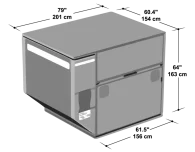 AAU Container
AAU Container
- Type: AAU CONTAINER
- ATA Code: LD29
- Internal Volume: 505 cu. ft. 14.3 mc
- Weight Limit: 4,626 kg
- Loadable Aircraft Type: 747, 747F
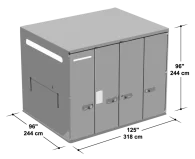 ALF Container
ALF Container
- Type: ALF CONTAINER
- ATA Code: LD6
- Internal Volume: 310 cu. ft. 8.78 mc
- Weight Limit: 3,175 kg
- Loadable Aircraft Type: 747, 747F,777, Airbus
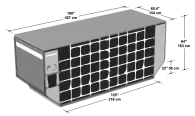 AMA Container
AMA Container
- Type: AMA CONTAINER
- ATA Code: M1
- Internal Volume: 621 cu. ft. 17.58 mc
- Weight Limit: 6,804 kg
- Loadable Aircraft Type: 747F
 AMF Container
AMF Container
- Type: AMF CONTAINER
- Internal Volume: 516 cu. ft. 14.6 mc
- Weight Limit: 5,035 kg
- Loadable Aircraft Type: 747,747F, 777, Airbus

P1P_PAG Pallet
- Type: P1P, PAG PALLET
- Size:
- Base: 88″x 125″
- Height: 64″, x 96″,118″
- Weight Limit: 4,626kg
(LD),6,033kg (MD) - Loadable Aircraft Type: 747,747F, 777, Airbus
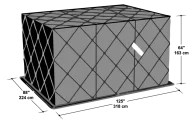 PEB Container
PEB Container
- Type: PEB CONTAINER
- Size:
- Base: 53″ x 88″
- Height: 84″
- Weight Limit: 1,800kg
(B-HIH -1,300 KG) - Loadable Aircraft Type: 747F
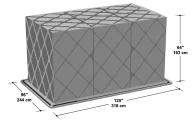 PLA Pallet
PLA Pallet
- Type: PLA PALLET
- Size:
- Base: 60.4″x 125″
- Height: 64″
- Weight Limit: 3,175kg
Loadable Aircraft Type: 747, 747F, 777, Airbus
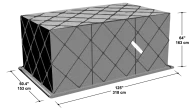 PMC_PQP_P6P Pallet
PMC_PQP_P6P Pallet
- Type: PMC, PQP, P6P PALLET
- Size: Base: 96″ x 125″
- Weight Limit: 5,035 kg (LD), 6,804 kg (MD)
- Loadable Aircraft Type: 747, 747F, 777, Airbus
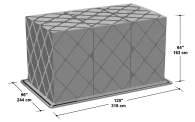 RKN Container
RKN Container
- Type: RKN CONTAINER
- ATA Code: LD3
- Internal Volume: 125.41 cu. ft. 3.55 mc
- Weight Limit: Weight: 1,588 kg
- Loadable Aircraft Type: 747, 747F, 777, Airbus
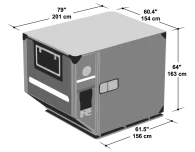 VZA_VRA
VZA_VRA
- Size: Fitted on PGA 20 ft. Pallet
- Max Width for Lower Car: 81″/ 205 cm
- Max Centre Height for Lower Car: 59″/ 150 cm
- Max Wheel Base: 312 cm
- Weight Limit: 2,500 kg(Upper Car)
9,300 kg c(Max Gross Weight of Pallet) - Loadable Aircraft Type: 747F Upper Deck

Unit Load Devices (ULD)
As of January 2023, over one million Unit Load Devices (ULDs) are in use globally. A ULD can take the form of an aircraft pallet, a pallet/net combination, or an aircraft container. These devices are considered removable parts of an aircraft and are regulated by civil aviation authorities. To be deemed airworthy, a ULD must be structurally sound, capable of restraining cargo, and designed to protect both the aircraft’s systems and structure during flight.
ULDs undergo regular testing to ensure they meet strict aviation authority standards. This rigorous process ensures that they continue to comply with design and safety regulations.
What sets ULDs apart from other aircraft components is that they are the only parts that can be removed and returned to the aircraft after handling by unregulated operators. Despite this, ULDs play a crucial role in flight safety by securing cargo and maintaining aircraft integrity during transit.
AIR FREIGHT FREIGHTER SPECIFICATIONS
| Make/Model | Max Payload Tonnes | Max Loadable Volume CBM3 | Cargo Hold Dims LxWxH cm | Cargo Door Size WxH cm |
| Cessna 406 Titan | 1.2 | 6.5 | 320 x 120 x 117 | 124 x 116 |
| Fairchild Metroliner II | 1.4 | 12 | 835 x 115 x 120 | 130 x 115 |
| Fairchild Metroliner III | 2.1 | 12 | 775 x 158 x 145 | 130 x 115 |
| Fairchild Metroliner 23 | 2.3 | 18 | 775 x 158 x 145 | 127 x 115 |
| Falcon 20 / 200 | 2.5 | 11 | 704 x 156 x 142 | 190 x 140 |
| Shorts 360 | 3.5 | 40 | 815 x 190 x 190 | 142 x 168 |
| Saab 340 | 3.8 | 40 | 1300 x 170 x 170 | 135 x 130 |
| Aerospatiale ATR42 | 4.6 | 40 | 1080 x 225 x 143 | 125 x 153 |
| Fokker 27 | 6.3 | 58 | 1336 x 210 x 190 | 228 x 175 |
| Antonov AN-26 | 6.5 | 45 | 1110 x 220 x 160 | 230 x 171 |
| Antonov AN-74 | 6.5 | 45 | 1000 x 215 x 220 | 226 x 220 |
| British Aerospace ATP | 8.2 | 78 | 1500 x 195 x 180 | 250 x 169 |
| Lockheed L-188 Electra | 15 | 135 | 2000 x 280 x 220 | 355 x 203 |
| Boeing 737-300F | 16 | 115 | 2100 x 310 x 220 | 340 x 215 |
| Antonov AN-12 | 18 | 95 | 1380 x 300 x 250 | 300 x 250 |
| Lockheed L-100 Hercules | 21 | 140 | 1707 x 302 x 274 | 302 x 274 |
| Boeing 727-200F | 23.5 | 144 | 2712 x 351 x 218 | 340 x 218 |
| Boeing 757F | 39 | 187 | 3327 x 353 x 218 | 340 x 218 |
| Airbus A300 B4F | 40 | 280 | 3900 x 477 x 223 | 358 x 256 |
| Douglas DC8-62 | 40 | 200 | 3400 x 317 x 203 | 355 x 215 |
| Douglas DC8-54/55 | 41 | 180 | 3100 x 317 x 203 | 355 x 215 |
| Ilyushin IL-76 | 45 | 180 | 1850 x 345 x 325 | 344 x 340 |
| Antonov AN-22 | 50 | 650 | 2640 x 430 x 430 | 430 x 430 |
| Lockheed L10-11 Tristar | 55 | 420 | 3300 x 360 x 274 | 431 x 284 |
| Boeing 767-300F | 55 | 400 | 3000 x 400 x 250 | 340 x 254 |
| Douglas DC10-30 | 65 | 400 | 3725 x 448 x 245 | 350 x 245 |
| McDonnell Douglas MD11 | 85 | 500 | 4800 x 350 x 245 | 355 x 245 |
| Boeing 747-100F | 90 | 675 | 4800 x 488 x 300 | 340 x 300 |
| Boeing 747-200F | 100 | 675 | 4900 x 488 x 300 | 340 x 300 |
| Boeing 777F | 100 | 625 | 4400 x 488 x 300 | 372 x 305 |
| Boeing 747-300/400F | 110 | 675 | 5000 x 488 x 300 | 340 x 300 |
| Antonov AN-124 | 120 | 800 | 3650 x 640 x 440 | 640 x 440 |
| Antonov AN-225 | 250 | 1100 | 4300 x 640 x 440 | 640 x 440 |
HIDDEN DANGEROUS AIR CARGO
Please Note: The below list does not describe all types of hazardous air cargo (it is not exhaustive and all encompassing). General items listed below may be found in baggage and possibly have hazards that are not immediately apparent. There are strict laws in relation to lodging of hazardous air cargo and compliance with hazardous air cargo regulations.
Typical examples of hazardous air cargo
Engines (contain fuel and that are not cleaned, purged and sealed)
Mining equipment
Magnets
Pressurised containers
Passenger baggage (containing flammable gas or liquid lighter refuel. camping stove cylinders
Photographic Supplies
Expeditionary equipment
Vaccines
Solvents, adhesives
Pesticides
Dental apparatus
Machinery parts
Frozen foods (packed in solid dry ice)
Dry Ice
Tool Boxes (compressed gases, aerosols)
Electrical equipment
Diving equipment
Pharmaceuticals
Switches in electrical equipment
Toys (made of cellulose)
Refrigerators (may contain gases or chemicals)
Swimming pool chemicals
Pressurised containers
Engines (contain fuel and that are not cleaned, purged and sealed)
Mining equipment
Diagnostic specimens
Thermometers (containing mercury)
Frozen Embryos
Ammunition
Swimming pool chemicals
Aerosols
Compressed non-flammable gas
Batteries
Breathing Apparatus
Frozen foods (packed in solid dry ice)
Motor Vehicle parts
Chemicals
HAZARD LABELS DANGEROUS GOODS (DG)
Hazard Labels for
Dangerous Goods (DG)
The international community has established a classification system for easy identification of dangerous goods. These goods fall into nine primary classes, and some classes are further divided to address specific risks. Each class/division has a corresponding label that accurately represents the nature of the hazard. These labels must be attached to the package during transport and remain intact throughout the journey. Take a look at the illustrated examples below to understand how these labels effectively communicate the potential dangers.
Under regulations, labels must be clearly visible on the outside of the package and must stay on the package while in transit.
You can often find labels printed on most inner packages such as:
- aerosol cans
- bottles of bleach
- containers of thinners
- tins of paint
- many other products which are available at supermarkets and hardware stores.
Below are the 9 hazard labels for the 9 classes of dangerous goods.
Class 1 Explosives

This includes items such as:
- explosive substances
- pyrotechnic devices
- ammunition
- fireworks
- detonators.
Class 2 Gases

These can be transported as:
- compressed
- liquefied
- refrigerated liquefied
- gas in solution.
This includes aerosols. Class 2 has 3 divisions:
- Division 2.1 - flammable gases such as:
- butane
- propane
- Division 2.2 - non-flammable, non-toxic gases such as:
- oxygen
- liquid nitrogen
- compressed air
- Division 2.3 - toxic gases such as:
- chlorine
- hydrogen sulphide.
Class 3 Flammable liquids

This includes liquids with a boiling point of 35⁰ C or less, or a flash point of 60⁰ C or less such as:
- petrol
- alcohol
- perfumes
- essential oils
- hand sanitiser
- paints.
Class 4 Flammable solids

These are substances that can spontaneously combust and substances, that when they come into contact with water or emit flammable gases. Class 4 has 3 divisions:
- Division 4.1 - flammable solids such as:
- hexamine solid fuel tablets for camping stoves
- self-reactive substances
- desensitised explosives
- Division 4.2 - substances that can spontaneously combust under normal air transport conditions include:
- camphor
- sulphur
- matches
- Division 4.3 - substances that emit flammable gases when they come into contact with water include:
- sodium
- zinc particles
- activated carbon.
Class 5 Oxidising substances and organic peroxides

These substances are not necessarily combustible on their own but can react dangerously with other substances. Class 5 has 2 divisions:
- Division 5.1 - oxidising substances that may not be necessarily combustible, but they may readily yield oxygen and cause other materials to combust, such as:
- hydrogen peroxide
- ammonium nitrate
- potassium chlorate
- sodium nitrate
- Division 5.2 - organic peroxides are thermally unstable and can emit heat and give off harmful or flammable vapours. They can also be liable to explosive decomposition and react dangerously with other substances. Examples are:
- acetyl acetone peroxide
- benzoyl peroxide
- peracetic acid.
Class 6 Toxic and infectious substances

These substances can cause sickness, injury or death if consumed. Class 6 has 2 divisions:
- Division 6.1 - toxic substances that can cause death, injury or to harm human health if swallowed, inhaled or by skin contact, such as:
- chloroform
- arsenics
- cyanides
- cytotoxic waste
- barium compounds
- pesticides
- Division 6.2 - infectious substances that contain or are expected to contain pathogens that can cause disease in humans or animals, including:
- medical or clinical waste
- patient specimens
- genetically modified organisms
- infectious substances
- infected animals.
Class 7 Radioactive materials

These are substances that emit invisible ionising radiation that can be harmful to humans and animals. It can cause objects such as aircraft and equipment to become contaminated if not packaged and handled correctly, such as:
- uranium
- radioactive ores
- isotypes
- radium
- cesium
- x-ray equipment
- medical equipment or parts.
Class 8 Corrosives

These substances can cause irreversible damage if they come into contact with skin and could destroy other freight, or materially damage containers or aircraft. This includes:
- acids
- corrosive cleaners
- battery fluid
- formaldehyde
- hydrofluoric acid.
Class 9 Miscellaneous
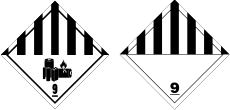
These are substances and articles which, during air transport, present a danger not covered by other classes. There are 2 types of handling labels – 1 for lithium battery shipments, and another for all other miscellaneous dangerous goods. This class includes:
- lithium batteries
- battery powered vehicles
- battery powered equipment
- first aid kids
- environmentally hazardous substances
- dry ice
- magnetised materials
- asbestos.
Handling labels
In addition to hazard labels, trained staff must attach handling labels where needed. Staff must use these 4 handling labels with the appropriate hazard labels:
Cargo aircraft only

This label is used to show that the load cannot be carried on a passenger aircraft.
Cyrogenics

This label is used on liquefied gases, such as the ones in Class 2.
This way up

This label ensures a load is placed the correct way up and can be used for non-dangerous goods.
Magnetised material

This label ensures that the load is kept away from the aircraft compass detector unit while being loaded and unloaded.
AIR FREIGHT AIRLINE INFORMATION
View the latest flight information.
| Airline | Airline Code | Customer Service | Sales Office | Website | |
 | TL | 1800 627 474 | 1800 627 474 | http://www.airnorth.com.au/ | |
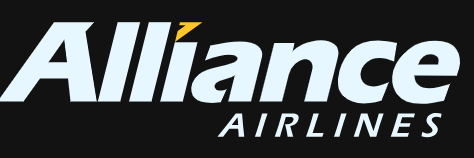 | 1300 780 970 | 1300 780 970 | http://www.allianceairlines.com.au/ | ||
 | JQ | 13 15 38 | +61 3 9645 5999 | http://www.jetstar.com | |
 | QF | 13 13 13 | http://www.qantas.com.au | ||
 | ZL | 13 17 13 | https://www.rex.com.au | ||
 | VA | 13 67 89 | http://www.virginaustralia.com | ||
| Provider | Website | ||||
| Aerocare | http://www.aerocare.com.au | ||||
| Menzies Aviation | http://www.menziesaviation.com.au | ||||
| Patrick Air Services | http://w.auww.patrick.com | ||||
| Qantas Airways (passenger & ramp handling) | http://www.qantas.com.au | ||||
| Toll Dnata | http://www.tolldnata.com | ||||
AIRPORTS NEW SOUTH WALES (NSW)
AIRPORTS NEW SOUTH WALES (NSW)
| Airport name | IATA | ICAO | Address | AIRLINES |
| Albury Airport | ABX | YMAY | 121 Airport Dr, Albury NSW 2640 http://www.alburycity.nsw.gov.au/community-services/albury-airport | QantasLink, Regional Express, Virgin Blue Airlines |
| Armidale Airport | ARM | YARM | Armidale NSW 2350 http://www.armidale.nsw.gov.au/council/armidale-airport | Qantaslink, Regional Express (REX) |
| Ballina Byron Gateway Airport | BNK | YBNA | 210 Southern Cross Dr, Ballina NSW 2478 http://ballinabyronairport.com.au/ | Jetstar, Virgin Australia, Regional Express (REX) |
| Balranald Airport | BZD | YBRN | Balranald Rd, Balranald NSW 2715 http://www.balranald.nsw.gov.au/council-activities/balranald-aerodrome/ | |
| Bankstown Airport | BWU | YSBK | Bankstown Airport NSW 2200 http://www.bankstownairport.com.au | |
| Bathurst Airport | BHS | YBTH | Pj Moodie Memorial Dr, Bathurst NSW 2795 | |
| Bourke Airport | BRK | YBKE | Bourke NSW 2840 | |
| Brewarrina Airport | BWQ | YBRW | Brewarrina NSW 2839 | |
| Broken Hill Airport | BHQ | YBHI | Airport Rd, Broken Hill NSW 2880 http://www.brokenhill.nsw.gov.au/council-services-brokenhill/airport-brokenhill | Regional Express (REX) |
| Camden Airport | CDU | YSCN | Macquarie Grove Rd, Camden | |
| Cessnock Airport | CES | YCNK | Wine Country Dr, Pokolbin NSW 2320 | Hunter Valley Aviation ,Avondale Aviation |
| Clarence Valley Regional Airport | GFN | YGFN | Aerodrome Rd, Glenugie NSW 2460 http://www.clarence.nsw.gov.au/cp_themes/metro/page.asp?p=DOC-LTD-41-41-75 | Regional Express |
| Cobar Airport | CAZ | YCBA | Lerida Rd, Cobar NSW 2835 | Brindabella Airlines |
| Coffs Harbour Airport | CFS | YCFS | Aviation Dr, Coffs Harbour NSW 2450 http://www.coffscoast.com.au/airport | Qantas, QantasLink, Tigerair Australia, Virgin Australia |
| Collarenebri Airport | CRB | YCBR | ||
| Cooma – Snowy Mountains Airport | OOM | YCOM | 1611 Kosciuszko Rd, Cooma NSW 2630 http://www.snowymountainsairport.com.au | |
| Coonabarabran Airport | COJ | YCBB | Coonabarabran NSW 2357 | |
| Coonamble Airport | CNB | YCNM | Coonamble NSW 2829 | Regional Express (REX) |
| Cootamundra Airport | CMD | YCTM | Cootamundra NSW 2590 | |
| Corowa Airport | CWW | YCOR | Redlands Rd, Corowa NSW 2646 | |
| Cowra Airport | CWT | YCWR | Cowra NSW 2794 http://www.cowraairport.com.au | |
| Deniliquin Airport | DNQ | YDLQ | Deniliquin NSW 2710 | |
| Dubbo City Airport | DBO | YSDU | Cooreena Rd, Dubbo NSW 2830 http://www.dubboairport.com/Airport/home | QantasLink, Regional Express (REX) |
| Forbes Airport | FRB | YFBS | Forbes NSW 2871 | |
| Glen Innes Airport | GLI | YGLI | 779 Emmaville Rd, Glen Innes NSW 2370 | |
| Goulburn Airport | GUL | YGLB | 59 Airport Rd, Goulburn NSW 2580 http://www.goulburn.nsw.gov.au/Engineering/Goulburn-Airport.aspx | |
| Griffith Airport | GFF | YGTH | Remembrance Dr, Griffith NSW 2680 http://www.griffith.nsw.gov.au/cp_themes/default/page.asp?p=DOC-SKR-05-80-51 | Regional Express (REX) Griffith Airport |
| Gunnedah Airport | GUH | YGDH | Gunnedah NSW 2380 | |
| Hay Airport | HXX | YHAY | Cobb Hwy, Hay South NSW 2711 | |
| Illawarra Regional Airport (Wollongong Airport) | WOL | YWOL | Albion Park Rail NSW 2527 http://www.illawarraregionalairport.com.au | EliteJet, NSW Air, Southern Biplane Adventures, Touchdown Helicopters |
| Inverell Airport | IVR | YIVL | Aerodrome Access Rd, Gilgai NSW 2360 | |
| Kempsey Airport | KPS | YKMP | Aldavilla NSW 2440 http://www.kempsey.nsw.gov.au/air-transport.html | QantasLink, Virgin Australia |
| Lightning Ridge Airport | LHG | YLRD | Lightning Ridge NSW 2834 | |
| Lismore Airport | LSY | YLIS | Bruxner Hwy, Loftville NSW 2480 | Regional Express (REX) |
| Lord Howe Island Airport | LDH | YLHI | Lord Howe Island 2898 | QantasLink |
| Merimbula Airport | MIM | YMER | Merimbula NSW 2548 http://www.merimbulaairport.com.au | Merimbula Air Services, Air Sapphire, Regional Express (REX) |
| Moree Airport | MRZ | YMOR | Newell Highway, 6km South of the Post Office, Moree NSW 2400 | Brindabella Airlines |
| Moruya Airport | MYA | YMRY | N Head Dr, Moruya NSW 2537 | Regional Express (REX) |
| Mudgee Airport | DGE | YMDG | George Campbell Dr, Bombira NSW 2850 http://www.midwestern.nsw.gov.au/Our-Facilities/MudgeeAirport/ | Commercial Helicopters |
| Narrabri Airport | NAA | YNBR | Narrabri, New South Wales | |
| Narrandera Airport | NRA | YNAR | Narrandera NSW 2700 | Regional Express (REX) |
| Narromine Airport | QRM | YNRM | Narromine NSW 2821 | |
| Newcastle Airport (RAAF Williamtown) | NTL | YWLM | 1 Williamtown Dr, Williamtown NSW 2318 http://www.newcastleairport.com.au | Jetstar, Regional Express (REX), Vurgin Australia, QantasLink |
| Nyngan Airport | NYN | YNYN | Nyngan St, Nyngan NSW 2825 | |
| Orange Airport | OAG | YORG | Orange NSW 2800 http://www.orange.nsw.gov.au/site/index.cfm?display=147100 | Alliance Airlines, Regional Express (REX) |
| Parkes Airport | PKE | YPKS | Parkes, New South Wales | Regional Express (REX) |
| Port Macquarie Airport | PQQ | YPMQ | 99 Boundary Street, Port Macquarie NSW 2444 http://www.portmacquarieairport.com.au/Home | QantasLink, Virgin Australia |
| Quirindi Airport | YQDI | Quirindi NSW 2343 | ||
| Sydney Airport (Kingsford Smith Airport) | SYD | YSSY | Airport Dr, Sydney NSW 2020 http://www.sydneyairport.com.au | |
| Tamworth Airport | TMW | YSTW | Basil Brown Dr, Westdale NSW 2340 | QantasLink |
| Taree Airport | TRO | YTRE | 1 Lansdowne Rd, Cundletown NSW 2430 | Regional Express (REX) |
| Temora Airport | TEM | YTEM | Airport St, Temora NSW 2666 | |
| Tibooburra Airport | TYB | YTIB | Tibooburra NSW 2880 | |
| Tumut Airport | TUM | YTMU | Bombowlee NSW 2720 | |
| Wagga Wagga Airport (RAAF Base Wagga) | WGA | YSWG | Don Kendall Dr, Forest Hill NSW 2651 http://www.wagga.nsw.gov.au/city-of-wagga-wagga/business/council-businesses/airport2 | QantasLink, Regional Express (REX) |
| Walgett Airport | WGE | YWLG | Walgett NSW 2832 | |
| Warnervale Airport | YWVA | Warnervale NSW 2259 http://www.ccac.com.au | ||
| Warren Airport | QRR | YWRN | Red Hill, New South Wales, Australia | |
| West Wyalong Airport | WWY | YWWL | Airport Road, West Wyalong NSW 2671 | Regional Express (REX) |
| Young Airport | NGA | YYNG | Maimuru NSW 2594 |
DOMESTIC AIRPORTS VICTORIA (VIC)
| Airport name | IATA | ICAO | Address | Airlines |
| Ararat Airport | ARY | YARA | Western Hwy, Ararat VIC 3377 | |
| Avalon Airport | AVV | YMAV | 80 Beach Rd, Lara VIC 3212 Phone: (03) 5227 9100 http://www.avalonairport.com.au | Jetstar |
| Bacchus Marsh Airfield | YBSS | Bacchus Marsh, Victoria, Australia. | ||
| Bairnsdale Airport | BSJ | YBNS | 345 Bengworden Rd, Bairnsdale VIC 3875 | |
| Ballarat Airport | YBLT | Mitchell Park, Ballarat, Victoria | ||
| Barwon Heads Airport | YBRS | 1405 Barwon Heads Rd, Connewarre VIC 3227 Phone: (03) 5254 2338 http://www.barwonheadsairport.com/ | ||
| Benalla Airport | BLN | YBLA | Benalla VIC 3672 | |
| Bendigo Airport | BXG | YBDG | Bendigo VIC Phone: (03) 5434 6000 | |
| Corryong Airport | CYG | YCRG | Corryong, Victoria | |
| Echuca Airport | ECH | YECH | Echuca VIC 3564 | |
| Hamilton Airport | HLT | YHML | Hamilton, Victoria | Sharp Airlines |
| Hopetoun Airport | HTU | YHPN | Hopetoun VIC 3396 | |
| Horsham Airport | HSM | YHSM | Horsham, Victoria, Australia | |
| Kerang Airport | KRA | YKER | Kerang VIC 3579 | |
| Latrobe Valley Airport | LTB | YLTV | Latrobe Valley town of Morwell, Victoria, Australia | |
| Leongatha Airport | YLEG | Leongatha South VIC 3953 | ||
| Mallacoota Airport | XMC | YMCO | Mallacoota VIC 3892 | |
| Mangalore Airport | YMNG | 331 Aerodrome Rd, Mangalore VIC 3663 Phone:(03) 5796 2000 http://www.mangaloreairport.com.au | ||
| Melbourne Airport | MEL | YMML | Departure Dr, Melbourne Airport VIC 3045 Phone: (03) 9297 1600 http://melbourneairport.com.au | |
| Essendon Airport | MEB | YMEN | 7 English Street, Essendon Fields VIC 3041 Phone: (03) 9948 9300 http://www.essendonairport.com.au | Alliance Airlines, Sharp Airlines, Par-Avion |
| Moorabbin Airport | MBW | YMMB | 66 Bundora Parade, Moorabbin Airport VIC 3194 Phone: (03) 8587 8000 http://www.moorabbinairport.com.au | King Island Airlines |
| Mildura Airport | MQL | YMIA | Alan Mathews Dr, Mildura VIC 3500 Phone: (03) 5055 0500 http://www.milduraairport.com.au | Virgin Australia Regional Express(REX), QantasLink |
| Nhill Airport | YNHL | Nhill VIC 3418 | ||
| Orbost Airport | RBS | YORB | Marlo VIC 3888 | |
| Portland Airport | PTJ | YPOD | Portland, Victoria, Australia | Sharp Airlines |
| Robinvale Airport | RBC | YROI | Robinvale, Victoria, Australia | |
| West Sale Airport | YWSL | Fulham VIC 3851 | ||
| Shepparton Airport | SHT | YSHT | Shepparton, Victoria, Australia | |
| Stawell Airport | SWC | YSWL | Aerodrome Rd, Stawell VIC 3380 | |
| Swan Hill Airport | SWH | YSWH | Swan Hill VIC | |
| Wangaratta Airport | WGT | YWGT | Laceby VIC 3678 | |
| Warracknabeal Airport | WKB | YWKB | Kellalac VIC 3393 | |
| Warrnambool Airport | WMB | YWBL | Warrnambool, Victoria in Australia | |
| Yarrawonga Airport | YYWG | Yarrawonga VIC 3730 |
DOMESTIC AIRPORTS QUEENSLAND (QLD)
| Airport name | IATA | ICAO | Address | Airlines |
| Alpha Airport | ABH | YAPH | Alpha, Queensland, Australia | |
| Aurukun Airport | AUU | YAUR | Aurukun Mission QLD | Skytrans Airlines, Qantaslink |
| Northern Peninsula Airport (Bamaga/Injinoo Airport) | ABM | YNPE | Airport rd, Bamaga QLD 4876. | Skytrans Airlines |
| Barcaldine Airport | BCI | YBAR | Barcaldine, Queensland | QantasLink |
| Bedourie Airport | BEU | YBIE | Bedourie QLD | Skytrans Airlines |
| Birdsville Airport | BVI | YBDV | Birdsville QLD 4482 | Skytrans Airlines, Central Eagle Aviation, West Wing Aviation |
| Blackall Airport | BKQ | YBCK | Landsborough Hwy, Blackall QLD 4472 | QantasLink |
| Blackwater Airport | BLT | YBTR | Stewarton QLD 4702 | QantasLink |
| Boigu Island Airport | GIC | YBOI | Boigu Island, Queensland, Australia | |
| Boulia Airport | BQL | YBOU | Boulia, Queensland | Skytrans Airlines |
| Brisbane Airport | BNE | YBBN | 11 The Circuit, Brisbane Airport QLD 4008 Phone: (07) 3406 3000 http://www.bne.com.au/ | |
| Archerfield Airport | YBAF | Beatty Rd, Archerfield QLD 4108 Phone: (07) 3275 8000 http://www.archerfieldairport.com.au | ||
| Bundaberg Airport | BDB | YBUD | Bundaberg, Queensland, Australia | QantasLink, Virgin Australia Regional Airlines, Seair Pacific |
| Burketown Airport | BUC | YBKT | Burketown, Queensland, Australia | Skytrans Airlines |
| Cairns Airport | CNS | YBCS | Airport Ave, Cairns QLD 4870 Phone: (07) 4080 6703 http://www.cairnsairport.com.au | |
| Charleville Airport | CTL | YBCV | Charleville QLD 4470 | QantasLink, Skytrans Airlines |
| Charters Towers Airport | CXT | YCHT | Charters Towers QLD 4820 | |
| Chinchilla Airport | CCL | YCCA | Aerodrome Rd, Chinchilla QLD 4413 | |
| Clermont Airport | CMQ | YCMT | Clermont, Queensland, Australia. | |
| Cloncurry Airport | CNJ | YCCY | Sir Hudson Fysh Dr, Cloncurry QLD 4824 | Alliance Airlines, QantasLink, Virgin Australia |
| Coen Airport | CUQ | YCOE | Peninsula Developmental Rd, Coen QLD 4871 | Skytrans Airlines |
| Cooktown Airport | CTN | YCKN | Cooktown Developmental Rd, Cooktown QLD 4895 | Hinterland Aviation |
| Cunnamulla Airport | CMA | YCMU | Cunnamulla QLD 4490 | Skytrans Airlines |
| Dirranbandi Airport | DRN | YDBI | Cowildi St, Dirranbandi QLD 4486 | |
| Doomadgee Airport | DMD | YDMG | Doomadgee, Queensland, Australia | Skytrans Airlines |
| Dunk Island Airport | DKI | YDKI | Dunk QLD 4852 | Hinterland Aviation |
| Emerald Airport | EMD | YEML | Emerald, Queensland, Australia | QantasLink, Virgin Australia Regional Airlines |
| Gladstone Airport | GLT | YGLA | Aerodrome Rd, Clinton QLD 4680 Phone: (07) 4977 8800 http://www.gladstone.qld.gov.au/gladstone-airport | QantasLink, Virgin Australia Regional Airlines |
| Gold Coast Airport | OOL | YBCG | Eastern Ave, Bilinga QLD 4225 Phone: (07) 5589 1100 http://goldcoastairport.com.au | |
| Goondiwindi Airport | GOO | YGDI | Goondiwindi QLD 4390 | |
| Gympie Airport | GYP | YGYM | Lobwein Rd, Kybong QLD 4570 | |
| Great Barrier Reef Airport (Hamilton Island Airport) | HTI | YBHM | Hamilton Island QLD 4803 Phone: (07) 4946 9999 http://www.hamiltonisland.com.au/airport | Jetstar Airways, Qantas, QantasLink, Virgin Australia |
| Hervey Bay Airport | HVB | YHBA | William Deam Avenue, Shop 6, Hervey Bay QLD 4655 Phone: (07) 4194 6907 http://www.frasercoastairport.com.au | Virgin Australia. QantasLink, Qantas Airways |
| Horn Island Airport | HID | YHID | Airport Rd, Horn Island QLD 4875 Phone: (07) 4069 1314 | Qantas |
| Hughenden Airport | HGD | YHUG | Hann Hwy, Hughenden QLD 4821 Phone: (07) 4741 2900 | Regional Express Airlines (REX) |
| Julia Creek Airport | JCK | YJLC | Julia Creek QLD | Regional Express Airlines (REX) |
| Karumba Airport | KRB | YKMB | Karumba QLD 4891 | Skytrans Airlines |
| Kingaroy Airport | KGY | YKRY | Warren Truss Dr, Taabinga QLD 4610 | |
| Kowanyama Airport | KWM | YKOW | Chapman Rd, Kowanyama QLD 4871 | Skytrans Airlines |
| Kubin Airport | KUG | YKUB | Kubin Island QLD | West Wing Aviation |
| Lizard Island Airport | LZR | YLZI | Starcke QLD 4871 | Hinterland Aviation |
| Lockhart River Airport | IRG | YLHR | Lockhart QLD 4871 | Skytrans Airlines |
| Longreach Airport | LRE | YLRE | Landsborough Hwy, Longreach QLD 4730 Phone: (07) 4658 3766 http://www.longreachairport.com.au | Regional Express Airlines (REX), QantasLink |
| Mackay Airport | MKY | YBMK | Boundary Rd E, East Mackay QLD 4740 Phone: (07) 4957 0201 http://mackayairport.com | Jetstar, Qantas, Virgin Australia, TigerAir |
| Mareeba Airfield | MRG | YMBA | Vicary Rd, Mareeba QLD 4880 | Mission Aviation Fellowship |
| Sunshine Coast Airport | MCY | YBSU | Sunshine Coast Airport (MCY), Friendship Ave, Marcoola QLD 4564 Phone: (07) 5453 1500 http://www.sunshinecoastairport.com.au | Jetstar, Virgin Australia , Air New Zealand |
| Maryborough Airport | MBH | YMYB | Maryborough QLD 4650 | |
| Mornington Island Airport | ONG | YMTI | Mornington QLD 4871 | Skytrans Airlines |
| Mount Isa Airport | ISA | YBMA | Barkly Hwy, Mt Isa QLD 4825 Phone: (07) 4743 4598 http://www.mountisaairport.com.au | Airnorth, Alliance Airlines, Qantas Airways (Including Qantaslink), Regional Express (REX), Skytrans, Virgin Australia |
| Murray Island Airport | MYI | YMUI | Murray Island, Queensland, Australia | West Wing Aviation |
| Muttaburra Airport | UTB | YMTB | Muttaburra QLD 4732 | |
| Normanton Airport | NTN | YNTN | Normanton, Queensland | Westwing Aviation, Skytrans Airlines |
| Palm Island Airport | PMK | YPAM | Palm Island QLD 4816 | Skytrans Airlines |
| Edward River Airport | EDR | YPMP | Wirran St, Pormpuraaw QLD 4871 | Skytrans Airlines |
| Whitsunday Coast Airport | PPP | YBPN | Peppers Palm Bay (Island Resort) QLD Phone: (07) 4945 0200 http://www.whitsunday.qld.gov.au/aerodromes | Jetstar Airways, Virgin Australia, Tigerair |
| Quilpie Airport | ULP | YQLP | Quilpie, Queensland, Australia | Skytrans Airlines |
| Redcliffe Airport | RCL | YRED | Rothwell QLD 4022 http://www.redcliffeaeroclub.com.au | SEAIR Pacific, Air Queensland |
| Richmond Airport | RCM | YRMD | Richmond, Queensland, Australia | Regional Express Airlines (REX) |
| Rockhampton Airport | ROK | YBRK | Rockhampton, Queensland http://www.rockhamptonregion.qld.gov.au/Council_Services/Airport | QantasLink, Virgin Australia Regional Airlines |
| Roma Airport | RMA | YROM | Airport Dr, Roma QLD 4455 http://www.maranoa.qld.gov.au/airports | Alliance Airlines, QantasLink |
| St George Airport | SGO | YSGE | St George QLD 4487 | Skytrans Airlines |
| Springvale Airport | KSV | YSPV | Diamantina Lakes QLD 4735 | |
| Taroom Airport | XTO | YTAM | Taroom QLD 4420 | |
| Thangool Airport | THG | YTNG | Aerodrome Rd, Thangool QLD 4716 | QantasLink |
| Thargomindah Airport | XTG | YTGM | Thargomindah, Queensland | Skytrans Airlines |
| Toowoomba Airport | TWB | YTWB | Toowoomba, Queensland | Skytrans Airlines |
| Brisbane West Wellcamp Airport | YBWW | Wellcamp west of Toowoomba, Queensland, Australia http://www.wellcamp.com.au | ||
| Townsville Airport (RAAF Townsville) | TSV | YBTL | Garbutt QLD 4814 Phone: (07) 4727 3211 http://www.townsvilleairport.com.au | Alliance Airlines, Jetstar Airways, West Wing Aviation, Qantas Airways, Qantas Link, Airnorth, Virgin Australia, Regional Express(REX) |
| Weipa Airport | WEI | YBWP | Mission River QLD 4874 | QantasLink, Skytrans Airlines |
| Windorah Airport | WNR | YWDH | Diamantina Developmental Rd, Windorah QLD 4481 | Skytrans Airlines |
| Winton Airport | WIN | YWTN | Landsborough Hwy, Corfield QLD 4733 | Regional Express Airlines (REX) |
| Donnington Airpark | YDOP | Woodstock QLD 4816 |
DOMESTIC AIRPORTS SOUTH AUSTRALIA (SA)
| Airport name | IATA | ICAO | Address | Airlines |
| Adelaide Airport | ADL | YPAD | 1 James Schofield Dr, Adelaide Airport SA 5950 Phone: (08) 8308 9211 http://www.adelaideairport.com.au | |
| Parafield Airport | YPPF | Tigermoth Lane, Parafield SA 5106 Phone: (08) 8307 5700 http://www.parafieldairport.com.au | ||
| Ceduna Airport | CED | YCDU | Eyre Hwy, Ceduna SA 5690 | Regional Express Airlines (REX) |
| Cleve Airport | CVC | YCEE | Cleve, South Australia | |
| Coober Pedy Airport | CPD | YCBP | Coober Pedy SA 5723 | Alliance Airlines, Regional Express Airlines (REX) |
| Cowell Airport | YCWL | Cowell, South Australia | ||
| Kimba Airport | YIMB | Kimba, South Austr | ||
| Kingscote Airport | KGC | YKSC | Kingscote, South Australia | Regional Express Airlines (REX) |
| Leigh Creek Airport | LGH | YLEC | Barndioota Rd, Leigh Creek SA 5731 | Sharp Airlines |
| Loxton Airport | YLOX | Bugle Hut SA 5311 | ||
| Mount Gambier Airport | MGB | YMTG | Airport Rd, Wandilo SA 5291 http://www.mountgambierairport.com.au | Regional Express Airlines (REX) |
| Naracoorte Airport | NAC | YNRC | Aerodrome Rd, Naracoorte SA 5271 Phone:(08) 8760 1100 | |
| Port Augusta Airport | PUG | YPAG | Port Augusta SA 5700 http://www.portaugusta.sa.gov.au/airport | Alliance Airlines, Sharp Airlines |
| Port Lincoln Airport | PLO | YPLC | North Shields SA 5607 Phone: (08) 8684 3400 | QantasLink, Regional Express Airlines (REX) |
| Port Pirie Airport | PPI | YPIR | Aerodrome Rd, Pirie East SA 5540 Phone: 0407 602 077 | |
| Renmark Airport | RMK | YREN | Old Calperum SA 5341 | |
| Streaky Bay Airport | YKBY | Streaky Bay SA 5680 http://www.streakybay.sa.gov.au/page.aspx?u=487 | ||
| Waikerie Airport | YWKI | Waikerie, South Australia | ||
| Whyalla Airport | WYA | YWHA | Whyalla SA 5600 | Regional Express Airlines (REX) |
| Wudinna Airport | WUD | YWUD | Wudinna SA 5652 |
DOMESTIC AIRPORTS WESTERN AUSTRALIA (WA)
| Airport name | IATA | ICAO | Address | Airlines |
| Albany Airport | ALH | YABA | Albany WA 6330 http://www.albany.wa.gov.au/facilities/albany-regional-airport/ | Virgin Australia Regional Airlines |
| Broome International Airport | BME | YBRM | Airport Mcpherson St, Broome WA 6725 Phone: (08) 9194 0600 http://www.broomeair.com.au | Qantas , Virgin Australia, Qantaslink , Airnorth |
| Busselton Regional Airport | BQB | YBLN | Vasse Hwy, Busselton WA 6280 Phone: (08) 9754 2333 http://www.busselton.wa.gov.au/airport | Virgin Australia Regional Airlines |
| Carnarvon Airport | CVQ | YCAR | Carnarvon WA 6701 | Skippers Aviation, Virgin Australia Regional Airlines |
| Cue Airport | CUY | YCUE | Cue WA 6640 | |
| Shark Bay Airport | MJK | YSHK | Monkey Mia Rd, Denham WA 6537 | Skippers Aviation |
| Curtin Airport (RAAF Curtin) | DCN | YCIN | Willare WA 6728 | Skippers Aviation, Virgin Australia Regional Airlines |
| Derby Airport | DRB | YDBY | Derby WA 6728 | |
| Esperance Airport | EPR | YESP | Coolgardie-Esperance Hwy, Gibson WA 6448 http://www.esperance.wa.gov.au/2/251/1/airport.pm | Virgin Australia Regional Airlines |
| Learmonth Airport (RAAF Learmonth) | LEA | YPLM | Minilya-Exmouth Rd, Learmonth WA 6707 | Qantas |
| Fitzroy Crossing Airport | FIZ | YFTZ | Fitzroy Crossing WA 6765 http://www.sdwk.wa.gov.au/facilities/airports/fiitzroycontactsinfo.html | |
| Forrest Airport | FOS | YFRT | Forrest, Western Australia http://www.forrestairport.com.au/ | |
| Geraldton Airport | GET | YGEL | Geraldton-Mount Magnet Road, Moonyoonooka WA 6532 Phone: (08) 9923 3207 http://geraldtonairport.com.au | Qantas, Skippers Aviation, Virgin Australia |
| Halls Creek Airport | HCQ | YHLC | Halls Creek WA 6770 | Skippers Aviation |
| Jandakot Airport | JAD | YPJT | 16 Eagle Dr, Jandakot WA 6164 Phone: (08) 9417 0900 http://www.jandakotairport.com.au | |
| Kalbarri Airport | KAX | YKBR | Fawcett-Broad Dr, Kalbarri WA 6536 | Skippers Aviation, Kalbarri Scenic Flights |
| Kalgoorlie-Boulder Airport | KGI | YPKG | Kalgoorlie, Western Australia | Alliance Airlines, Qantas, QantasLink, Virgin Australia Regional Airlines Kalgoorlie Air Charters |
| Karratha Airport | KTA | YPKA | Gap Ridge WA 6714 Phone: (08) 9186 8507 http://www.karrathaairport.com.au | Airnorth, Alliance Airlines, Qantas, QantasLink, Virgin Australia, Virgin Australia Regional Airlines Karratha Air Charters |
| Kununurra Airport | KNX | YPKU | Victoria Hwy, Kununurra WA 6743 http://www.swek.wa.gov.au/airports.aspx | Airnorth, Virgin Australia Regional Airlines |
| Lake Gregory Airport | LGE | Sturt Creek WA 6770 | ||
| Laverton Airport | LVO | YLTN | Laverton, Western Australia | Skippers Aviation |
| Leinster Airport | LER | YLST | Leinster WA 6437 | Skippers Aviation, Alliance Airlines |
| Leonora Airport | LNO | YLEO | Leonora WA 6438 http://www.leonora.wa.gov.au/domestic-airport.aspx | Skippers Aviation |
| Meekatharra Airport | MKR | YMEK | Murchison Downs Rd, Meekatharra WA 6642 | Skippers Aviation, Cobham Aviation |
| Mount Magnet Airport | MMG | YMOG | Mt Magnet WA 6638 | Skippers Aviation |
| Newman Airport | ZNE | YNWN | Newman WA 6753 http://www.newmanairport.com.au | Qantas, Virgin Australia |
| Onslow Airport | ONS | YOLW | Onslow WA 6710 | |
| Paraburdoo Airport | PBO | YPBO | Paraburdoo – Tom Price Rd, Paraburdoo WA 6754 Phone: (08) 9189 5825 | Qantas, Virgin Australia Regional Airlines |
| Perth Airport | PER | YPPH | 2 George Wiencke Dr, Perth WA 6105 Phone: (08) 9478 8888 http://www.perthairport.com.au | Jetstar, Qantas, Virgin Australia, Tigerair, Airnorth |
| Port Hedland International Airport | PHE | YPPD | Great Northern Hwy, Port Hedland WA 6721 Phone: (08) 9140 1725 http://www.porthedlandairport.com.au | Qantas, Virgin Australia, Airnorth |
| Ravensthorpe Airport | RVT | YNRV | Hopetoun WA 6348 | Virgin Australia Regional Airlines |
| Rottnest Island Airport | RTS | YRTI | Rottnest Island WA 6161 | Rottnest Air Taxi |
| Springvale Airport | ZVG | Diamantina Lakes QLD 4735 | ||
| Tom Price Airport | TPR | YTMP | Mt Sheila WA 6751 | |
| Wiluna Airport | WUN | YWLU | Wiluna WA 6646 | Skippers Aviation |
| Wyndham Airport | WYN | YWYM | Wyndham, Western Australia |
DOMESTIC AIRPORTS NORTHERN TERRITORY(NT)
| Airport name | IATA | ICAO | Address | Airlines |
| Alice Springs Airport | ASP | YBAS | Santa Teresa Rd, Alice Springs NT 0870 http://www.alicespringsairport.com.au | Qantas, Alliance, Chartair |
| Bathurst Island Airport | BRT | YBTI | Nguiu NT 0822 | |
| Croker Island Airport | CKI | YCKI | Croker Island NT 0822 | Fly Tiwi |
| Darwin International Airport (RAAF Darwin) | DRW | YPDN | 1 Henry Wrigley Dr, Darwin International Airport NT 0820 http://www.darwinairport.com.au | AirAsia, Airnorth, Jetstar, Malaysia Airlines, Philippine Airlines, Qantas, SilkAir, Tigerair, Virgin Australia Darwin Air Charters |
| Elcho Island Airport | ELC | YELD | Galiwinku NT 0822 | Mission Aviation Fellowship, Airnorth |
| Lake Evella Airport | LEL | YLEV | Gapuwiyak NT 0880 | Fly Tiwi, Mission Aviation Fellowship, Marthakal Yolngu Airline |
| Groote Eylandt Airport | GTE | YGTE | Anindilyakwa NT 0822 | Airnorth, Alliance Airlines |
| Kalkgurung Airport | KFG | YKKG | Daguragu NT 0852 | |
| Hooker Creek Airport | HOK | YHOO | Lajamanu NT 0852 | |
| Maningrida Airport | MNG | YMGD | Maningrida NT 0822 | Airnorth, Maningrida Progress Association Aviation |
| Snake Bay Airport | SNB | YSNB | Milikapiti NT 0822 | Air Ngukurr, Fly Tiwi |
| Milingimbi Airport | MGT | YMGB | Milingimbi Island NT 0822 | Mission Aviation Fellowship, Airnorth |
| Gove Airport | GOV | YPGV | Melville Bay Rd, Nhulunbuy NT 0881 Phone: (08) 8987 1370 | Airnorth, Mission Aviation Fellowship, Laynha Air |
| Port Keats Airfield | PKT | YPKT | Wadeye NT 0822 | |
| Garden Point Airport | GPN | YGPT | Pularumpi, Northern Territory, Australia | |
| Ramingining Airport | RAM | YRNG | Ramingining NT 0822 | Mission Aviation Fellowship, Fly Tiwi |
| Ngukurr Airport | RPM | YNGU | Ngukurr NT 0852 | Mission Aviation Fellowship |
| Tennant Creek Airport | TCA | YTNK | Tennant Creek NT 0860 Phone: (08) 8962 2696 http://www.tennantcreekairport.com.au | Chartair Tennant Creek Air Charters |
| Ayers Rock Airport (Connellan Airport) | AYQ | YAYE | Ayers Rock Connellan Airport, Terminal Building, Ayers Rock NT 0872 Phone: (08) 8956 2266 | Alliance Airlines, Fly Tiwi, Jetstar Airways, QantasLink, Virgin Australia |
| Victoria River Downs Airport | VCD | YVRD | Victoria River Downs NT 0852 |
INCOTERMS
INCOTERMS are standard trade terms most commonly used in international freight contracts for sale of goods. It is essential that you are aware of your terms of trade prior to shipment.
EXW – EX WORKS (… named place of delivery)
The Seller’s only responsibility is to make the goods available at the Seller’s premises. The Buyer bears full costs and risks of moving the goods from there to destination.
FCA – FREE CARRIER (… named place of delivery)
The Seller delivers the goods, cleared for export, to the carrier selected by the Buyer. The Seller loads the goods if the carrier pickup is at the Seller’s premises. From that point, the Buyer bears the costs and risks of moving the goods to destination.
CPT – CARRIAGE PAID TO (… named place of destination)
The Seller pays for moving the goods to destination. From the time the goods are transferred to the first carrier, the Buyer bears the risks of loss or damage.
CIP– CARRIAGE AND INSURANCE PAID TO (… named place of destination)
The Seller pays for moving the goods to destination. From the time the goods are transferred to the first carrier, the Buyer bears the risks of loss or damage. The Seller, however, purchases the cargo insurance.
DAT – DELIVERED AT TERMINAL (… named terminal at port or place of destination)
The Seller delivers when the goods, once unloaded from the arriving means of transport, are placed at the Buyer’s disposal at a named terminal at the named port or place of destination. “Terminal” includes any place, whether covered or not, such as a quay, warehouse, container yard or road, rail or air cargo terminal. The Seller bears all risks involved in bringing the goods to and unloading them at the terminal at the named port or place of destination.
DAP – DELIVERED AT PLACE (… named place of destination)
The Seller delivers when the goods are placed at the Buyer’s disposal on the arriving means of transport ready for unloading at the names place of destination. The Seller bears all risks involved in bringing the goods to the named place.
DDP – DELIVERED DUTY PAID (… named place)
The Seller delivers the goods -cleared for import – to the Buyer at destination. The Seller bears all costs and risks of moving the goods to destination, including the payment of Customs duties and taxes.
MARITIME TERMS
FAS – FREE ALONGSIDE SHIP (… named port of shipment)
The Seller delivers the goods to the origin port. From that point, the Buyer bears all costs and risks of loss or damage.
FOB– FREE ON BOARD (… named port of shipment)
The Seller delivers the goods on board the ship and clears the goods for export. From that point, the Buyer bears all costs and risks of loss or damage.
CFR– COST AND FREIGHT (… named port of destination)
The Seller clears the goods for export and pays the costs of moving the goods to destination. The Buyer bears all risks of loss or damage.
CIF – COST INSURANCE AND FREIGHT (… named port of destination)
The Seller clears the goods for export and pays the costs of moving the goods to the port of destination. The Buyer bears all risks of loss or damage. The Seller, however, purchases the cargo insurance.
EXPORT DOCUMENTATION
An Overview of Bills of Lading: Ensuring Precision in Shipping
Why is it crucial to verify Bill of Lading details?
The Bill of Lading meticulously captures the smallest shipment details, providing an exact representation of your cargo. This document is pivotal for identifying your shipment and becomes invaluable in dispute scenarios, especially when handling liability claims for damaged, lost, or delayed shipments.
When is the Bill of Lading Issued?
As a specialist in international shipping and freight, CargoMaster places utmost importance on accuracy in shipping dates, marks, and cargo descriptions when issuing the Bill of Lading. Adhering to maritime regulations, CargoMaster ensures precise details, recognising the significance of the date on the Bill of Lading, marking the enforcement of the shipment contract.
How is the Bill of Lading Compiled?
The compilation of a Bill of Lading involves several checks within the export documentation flow. Freight Forwarders like CargoMaster play a crucial role, ensuring accurate details such as container and bolt seal numbers, vessel information, weights, pieces loaded, and voyage numbers. While Bills of Lading are typically issued after the vessel sails, special requests may lead to earlier issuances.
A Contract in Documentation: The Bill of Lading
Functioning as a contract between the International Shipping Company and the cargo shipper, the Bill of Lading mirrors other contractual agreements, like a residential tenancy agreement. To meet international standards, Bills of Lading must align with conventions such as The Hague Rule, Hague-Visby Rule, Hamburg Rule, and The Carriage of Goods by Sea Act Australia 1991.
Insight into the Documentation Timeline
Disputes regarding Bill of Lading issues primarily emerge in cargo exportation. The export documentation flow involves meticulous coordination, ensuring the timely gathering of information from various sources. CargoMaster, handling machinery and out-of-gauge cargo, faces additional documentation requirements for compliance with international regulations.
International Freight Certificates: Navigating Export Documentation
Certificate of Free Sale (CFS)
A crucial document confirming the approval to sell goods in Australia, essential for customs clearance and import processes in certain overseas markets.
When exporting to certain countries you will require a Certificate of Free Sale (CFS), also called an export certificate or certificate of export. An Export Certificate confirms in writing that you can sell your goods in the Australian market and that there are no restrictions. The Certificate of Free Sale certifies that you have the approval of relevant authorities to sell your goods in Australia.
The overseas purchaser of your products may have problems with customs clearance and registration process’s if you do not provide a CFS when required, your buyer may not be able to import your product into their country. You may need to present this certificate as part of the customs clearance or registration process.
A CFS is often requested for products such as:
- food-based products
- medical parts, devices and products
- certain complementary, prescription, and over the counter medicines.
Not all countries require a CFS, the need for a Certificate of Free Sale will depend on your product and your export market. Speak with your buyer to find out if you need a CFS.
Where can I get a Certificate of Free Sale?
To find out more and apply for a Certificate of Free Sale (CFS) visit:
- Department of Health Therapeutic Goods Administration
- Department of Agriculture, Water and the Environment
- Australian Chamber of Commerce and Industry (ACCI)
ATA Carnet (Admission Temporary Admission)
Facilitates the temporary entry of goods into foreign countries, providing exemptions for import duties and taxes. Commonly used for high-value goods at exhibitions, trade shows, motorsports, and audiovisual production.
An ATA Carnet is an international document that permits temporary the temporary entry of commodities into overseas countries. Carnets are used for goods that are intended to be imported for a short period of time, then exported back to the country of origin. It provides exemptions for import duties and taxes. It is most often used for high-value goods imported for specific uses.
Typical goods that may be transported under a Carnet:
- cars, bikes, boats, caravans or trailers for exhibitions and trade shows
- es or cars and other vehicles used for motorsports
- equipment, trucks, and machinery for mining or farming
- cameras and other equipment used for filming and audiovisual production.
To apply for a Carnet contact The Australian Chamber Of Commerce and Industry
Australian Chamber of Commerce and Industry www.australianchamber.com.au/international/certificates-of-origin (ACCI).
Phytosanitary Certificate
Required for regulated commodities like plants and plant products, certifying compliance with quarantine regulations and the absence of pests.
Phytosanitary Certificates available from the Department of Agriculture, Water and Environment.
Certificate of Origin (CoO)
Government-certified or authorised entity-issued document confirming the origin of commodities, essential for Free Trade Agreements (FTAs) and customs clearance.
Note: Always check specific product and market requirements for accurate documentation needs.
Certificates of Origin are needed when Origin when
- exporting to countries where Australia has a current Free Trade Agreement (FTA)
- it is requested by the importer for customs clearance
- it is specified in a Documentary Letter of Credit.
Some agreements will allow for a self-certification, while others require a certificate from an authorised body. Self-certification carries a high level of risk and is not recommended for new exporters.
There are 2 types of Certificates of Origin
- Preferential certificates
A Preferential certificate will assist customs authorities to confirm your compliance with trade agreements made, tariffs and and Rules of Origin. Rules of Origin (ROO) are an agreed set of rules between countries that share a preferential trade agreement, such as a Free Trade Agreement (FTA). ROO set out the criteria for which goods are eligible for free or preferential import tariffs. Typically, they require a product to be entirely produced in a one of the participating countries or have a minimum percentage of the value produced there. They can be complex to understand so speak with your customs broker or freight forwarder or visit the DFAT Free Trade Agreement Portal.
Note: If Australia has a Free Trade Agreement (FTA) with the country you are exporting to you can apply for a Preferential certificate
2. Non-preferential certificates
Local governments of most countries issue non-preferential certificates to collect statistical data and ensure you are meeting:
- government sanctions
- anti-dumping rules
- quotas
- general tariffs.
Where can I get a Certificate of Origin?
To find out more and apply for a Certificate of Origin (COO) visit:
- Australian Chamber of Commerce and Industry (ACCI)
- Australian Industry Group (AI Group)
- International Export Certification Services (IECS)
For information about the documents needed for specific products check out.
CargoMaster ensures a seamless freight experience, combining expertise, accuracy, and compliance for precise cargo transport. Call us at 1300 767 136 for tailored shipping solutions and competitive rates.
Air Cargo Services
Australia Wide & Worldwide

Domestic Air Freight Services
 |
 |
 |
|
Cargo Consolidation |
Cargo Packers |
Project Cargo |
World-wide Cargo |
Domestic Air Freight Australia
Thank you for contacting us. It’s great that you have selected to contact us; we appreciate the opportunity. If your shipment relates to air freight or less than a container load of sea freight, please include the weight and dimensions of each piece in your request. We look forward to working with you; please feel free to call at any time.
TEL: 1300 767 136










